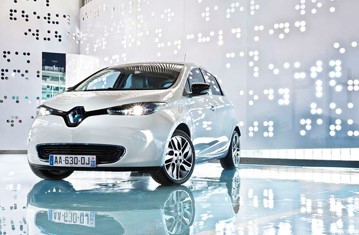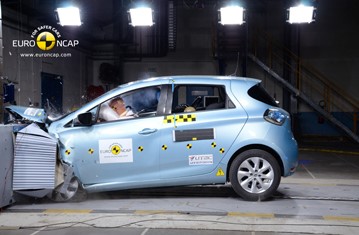Find more information in the General Comments section of the assessment
Find more information in the Rating Validity tab of the assessment
- See More
- See More
- See More
- See More
- Good
- Adequate
- Marginal
- Weak
- Poor
 Passenger
Passenger
 Driver
Driver
 Front Seat
Front Seat
 Car
Car
 Pole
Pole
- Good
- Adequate
- Marginal
- Weak
- Poor


Passenger
outboard
center
Fitted to the vehicle as standard
Not fitted to the test vehicle but available as option
Not Available
-
Infants up to 13 kg
-
Infants and toddlers up to 18 kg
-
Toddlers from 9 to 18 kg
-
Toddlers over 18 kg
Easy
Difficult
Safety critical
Not allowed
| Seat Position | ||||
|---|---|---|---|---|
| Front | 2nd row | |||
| Passenger | Left | center | Right | |
| Maxi Cosi Cabriofix (Belt) | ||||
| Britax Römer King Plus (Belt) | ||||
| Britax Römer Duo Plus (ISOFIX) | ||||
| Britax Römer KidFix (Belt) | ||||
| Maxi Cosi Cabriofix & EasyFix (Belt) | ||||
| Maxi Cosi Cabriofix & EasyFix (ISOFIX) | ||||
| BeSafe iZi Kid X3 ISOfix (ISOFIX) | ||||
| Maxi Cosi Pearl & Familyfix (ISOFIX) | ||||
| Britax Römer KidFix (ISOFIX) | ||||
Easy
Difficult
Safety critical
Not allowed
For 2013, Euro NCAP is using improved child dummies and applying a broader assessment of CRS to vehicle compatibility. Based on dummy data from the dynamic tests, the ZOE scored maximum points for its protection of the 1½ year infant. In the frontal impact, forward movement of the 3 year dummy, sat in a forward-facing restraint, was not excessive. In the side impact, both dummies were properly contained within the protective shells of their restraints, minimising the likelihood of dangerous head contact with parts of the car interior. All of the child restraints for which the car is designed could be installed without problem apart from the group 2/3 restraint, which could not be properly installed in the rear centre seat. The passenger airbag can be disabled to allow a rearward-facing restraint to be used in the front passenger seat. Clear information is provided to the driver regarding the status of the airbag and the system was rewarded.
- Good
- Adequate
- Marginal
- Weak
- Poor

Head Impact 14.2 Pts
Pelvis Impact 3.9 Pts
Leg Impact 6.0 Pts
The bumper provided good protection to pedestrians' legs in all areas tested and scored maximum points. The front edge of the bonnet offered marginal protection to the pelvis area. The bonnet offered predominantly fair protection for the head of a struck pedestrian, with some good protection in the areas where a child's head and an adult's head might strike.
- Good
- Adequate
- Marginal
- Weak
- Poor
| Speed Limit Information Function | Map |
| Speed Limitation Function | Manually Set |
| System Name | ESP | |
| Performance | ||
| Vehicle Yaw Rate @ COS + 1.00 s | 2.105% | meets ECE requirements |
| Vehicle Yaw Rate @ COS + 1.75 s | 2.294% | meets ECE requirements |
| Lateral Displacement @ BOS + 1.07 s | 3.07 m | meets ECE requirements |
| Applies To | All seats | ||
| Warning | Driver Seat | Front Passenger(s) | Rear Passenger(s) |
| Visual | |||
| Audible | |||
|
|||
Electronic stability control is standard equipment on the ZOE, and passed Euro NCAP's test requirements. A seatbelt reminder is standard for the front and rear seats. A speed assistance system is also standard equipment. This uses digital mapping to indicate the relevant speed limit. The driver can then use a manually-set speed limitation device as appropriate to control the vehicle's speed.
- Specifications
- Safety Equipment
- Videos
- Rating Validity
Specifications
Tested Model Renault ZOE, LHD
Body Type - 5 door hatchback
Year Of Publication 2013
Kerb Weight 1468kg
VIN From Which Rating Applies - applies to all ZOEs of the specification tested
Class City and Supermini
Safety Equipment
Note: Other equipment may be available on the vehicle but was not considered in the test year.
Fitted to the vehicle as standard
Fitted to the vehicle as option
Not fitted to the test vehicle but available as option
Not Available
Not Applicable
Videos
Rating Validity








Find more information in the General Comments section of the assessment
 Share
Share









The passenger compartment remained stable in the frontal impact. Dummy readings indicated good protection of all body regions for the passenger, and for all of the driver's body regions apart from the chest, protection of which was adequate. For the knees and femurs, Renault showed that a similar level of protection would be provided to occupants of different sizes and to those sat in different positions. In the side barrier test, the ZOE scored maximum points, with good protection of all body regions. However, in the more severe side pole impact, dummy readings of rib compression indicated weak protection of the chest. The front seats and head restraints provided marginal protection against whiplash injuries in the event of a rear-end collision.